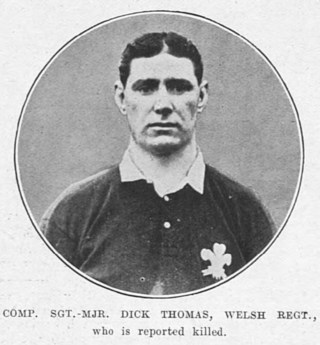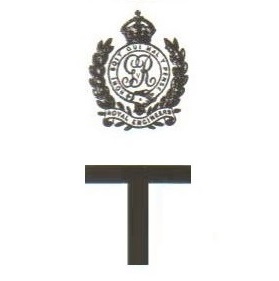Welsh Charge at Mametz Wood
Mametz Wood was the objective of the 38th (Welsh) Division during the First Battle of the Somme. The attack was made in a northerly direction over a ridge, focusing on the German positions in the wood, between 7 July and 12 July 1916. On 7 July the men formed the first wave intending to take the wood in a matter of hours. However, strong fortification, machineguns and shelling killed and injured over 400 soldiers before they reached the wood. Further attacks by the 17th Division on 8 July failed to improve the position.
The 14th (Swansea) (Service) Battalion, the Welsh Regiment, went into the attack with 676 men and after a day of hard fighting had lost almost 400 men killed or wounded before being relieved. Other battalions suffered similar losses. However, by 12 July the wood was effectively cleared of the enemy. The Welsh Division had lost about 4,000 men killed or wounded in the engagement. It would not be used in a massed attack again until 31 July 1917.

National Museum Cardiff is a museum and art gallery in Cardiff, Wales. The museum is part of the wider network of Amgueddfa Cymru – Museum Wales. Entry is kept free by a grant from the Welsh Government.

The 38th (Welsh) Division of the British Army was active during both the First and Second World Wars. In 1914, the division was raised as the 43rd Division of Herbert Kitchener's New Army, and was originally intended to form part of a 50,000-strong Welsh Army Corps that had been championed by David Lloyd George; the assignment of Welsh recruits to other formations meant that this concept was never realised. The 43rd was renamed the 38th (Welsh) Division on 29 April 1915, and shipped to France later that year. It arrived in France with a poor reputation, seen as a political formation that was ill-trained and poorly led. The division's baptism by fire came in the first days of the Battle of the Somme, where it captured Mametz Wood at the loss of nearly 4,000 men. This strongly held German position needed to be secured in order to facilitate the next phase of the Somme offensive, the Battle of Bazentin Ridge. Despite securing its objective, the division's reputation was adversely affected by miscommunication among senior officers.

Amgueddfa Cymru – Museum Wales, branded as simply Amgueddfa Cymru, is a Welsh Government sponsored body that comprises seven museums in Wales:
The Mametz Wood Memorial commemorates an engagement of the 38th (Welsh) Division of the British Army during the First Battle of the Somme in France in 1916.

Sir William Goscombe John was a prolific Welsh sculptor known for his many public memorials. As a sculptor, John developed a distinctive style of his own while respecting classical traditions and forms of sculpture. He gained national attention with statues of eminent Victorians in London and Cardiff and subsequently, after both the Second Boer War and World War I, created a large number of war memorials. These included the two large group works, The Response 1914 in Newcastle upon Tyne and the Port Sunlight War Memorial which are considered the finest sculptural ensembles on any British monument.

Christopher David Williams was a Welsh artist.
This article is about the particular significance of the year 1916 to Wales and its people.

Mametz is a former commune in the Somme department in Hauts-de-France in northern France. On 1 January 2019, it was merged into the new commune Carnoy-Mametz.

The Cardiff Blitz ; refers to the bombing of Cardiff, Wales during World War II. Between 1940 and the final raid on the city in March 1944 approximately 2,100 bombs fell, killing 355 people.

John Lewis Williams was a Welsh international wing who played club rugby for Cardiff Rugby Football Club. A three times Triple Crown winner, out of seventeen appearances for Wales he was on the losing side only twice.

Edward John Richard Thomas was a Welsh international rugby union back who played club rugby for Mountain Ash.

Margaret Lindsay Williams, was a Welsh artist who was commissioned to paint portraits of the British royal family, European royalty and American presidents. She was best known as a portrait painter and painted portraits of Queen Alexandra, Queen Mary, Princess Margaret and at least five portraits of the present Queen Elizabeth II. She also painted President Warren Harding, Henry Ford and Field Marshal Slim. Although Williams gained considerable recognition and was famous in her lifetime, her work has been neglected since.

Fricourt is a village that was fought over in July 1916, during the Battle of the Somme, which took place in France during the First World War. Fricourt is 3 mi (4.8 km) from Albert, north of Bray and west of Mametz, near the D 938 road and at the junction of the D 147 with the D 64. The village is 20 mi (32 km) north-east of Amiens and on the route of the Albert–Péronne light railway. Fricourt Wood was north-east of the village, with a château on the edge of the village and a number of craters, known as the Tambour on the west side. Fricourt formed a salient in the German front-line and was the principal German fortified village between the River Somme and the Ancre.

The Capture of Mametz took place on 1 July 1916, when the British Fourth Army attacked the German 2nd Army on the Western Front, during the first day of the Battle of the Somme. Mametz is a village on the D 64 road, about 20 mi (32 km) north-east of Amiens and 4 mi (6.4 km) east of Albert. Fricourt lies to the west, Contalmaison is to the north, Montauban to the north-east and Carnoy and Maricourt are to the south-east. Mametz Wood is 1,000 yd (910 m) to the north-west and before 1914, the village was the fifth largest in the area, with about 120 houses and had a station on the line from Albert to Péronne. During the Battle of Albert (25 to 29 September) 1914 the II Bavarian Corps attacked westwards north of the Somme but was fought to a standstill east of Mametz. Reinforced by the XIV Reserve Corps the Germans on the north side of the Somme attacked again and took Mametz on 29 September. After a mutually costly battle for Fricourt, where the French were eventually forced out, the front line stabilised and both sides began to dig improvised defences. In mid-December the French conducted a local attack in the Mametz area but were repulsed with many casualties.

The 183rd Tunnelling Company was one of the tunnelling companies of the Royal Engineers created by the British Army during World War I. The tunnelling units were occupied in offensive and defensive mining involving the placing and maintaining of mines under enemy lines, as well as other underground work such as the construction of deep dugouts for troop accommodation, the digging of subways, saps, cable trenches and underground chambers for signals and medical services.

The Capture of Contalmaison was a tactical incident of the Battle of Albert. Contalmaison is a commune in the Somme department in Picardy in northern France. The village is 4 mi (6.4 km) north-east of Albert on the D 104, north-west of Mametz Wood and south of Pozières, at the junction of several roads, atop a spur with a good view in all directions. In 1914, there was a church and a château just to the north, a chalk pit nearby and 72 houses, making it the seventh-largest village on the Somme. Military operations in the area began when the German XIV Reserve Corps advanced down the Bapaume–Albert road and Contalmaison was captured at noon on 28 September, by Reserve Infantry Regiment 40 and RIR 110 of the 28th Reserve Division which took 20 prisoners for a loss of three men killed and 21 wounded.
Paul Joyce is a British photographer and filmmaker. His portraits of artists are held in the collection of the National Portrait Gallery, London and his Welsh landscape photographs are held in the collection of Amgueddfa Cymru – Museum Wales.
The military history of Wales refers to military activity that has occurred in Wales or activity of a historic Welsh military or armed forces in Wales.

Wales, as part of the United Kingdom, participated as part of the allies in World War I (1914–1918) and the allies in World War II (1939–1945).













